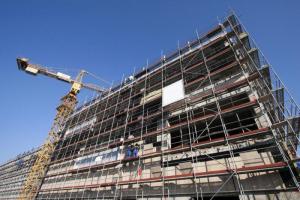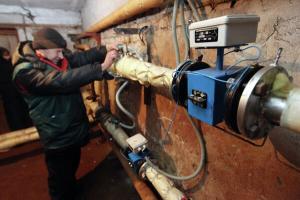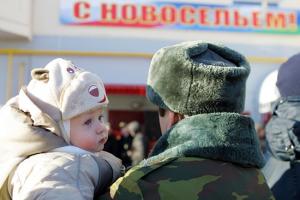Today, many parents who care about the comprehensive development of their child know that the formation of competent writing and reading skills is facilitated by the normal speech development of the child. Before starting classes, it is necessary to conduct an examination of the baby’s speech, to find any shortcomings in pronunciation.

Here are the characteristics of a child of this age:
- By the age of 5, the baby should be able to master all speech sounds, with the exception of hissing sounds and “R”, sometimes the sound “L”, which the child may still have trouble pronouncing.
- The child’s vocabulary must have a sufficient supply of words so that he can compose a sentence of 5-7 words.
- The child must be able to use words in the singular and plural.
- The child must be able to describe an object, pointing out its qualities.
- The ability to conduct a dialogue is another of the norms characteristic of children of this age. When communicating with an adult, his speech should be understandable, not only to parents, but also to strangers.
- The child must quickly say his first name, last name, age, names of parents, names of animals that live nearby.
If a child cannot do any of the above, he will benefit from attending speech therapy classes. They will be aimed at developing fine motor skills, enriching vocabulary, developing air flow and, of course, correcting impaired sound pronunciation.
In private speech therapy centers, consultations and classes are conducted by a speech therapist. However, his work is not cheap. But parents who have the opportunity to study at home with their baby will be able to spend this time profitably. Moreover, in a relaxed home environment, the child feels more comfortable: there is no unnecessary stress from communicating with a stranger.

Speech therapy classes at home
Various literature comes to the aid of mothers.
One of the manuals that you can use at home is “Speech therapy homework for children with special needs for 5-7 years” by N.E. Teremkova. These tasks can be offered to children under 5 years of age.
We suggest using the manuals of two more authors - Bardysheva T.Yu. and Monosova E.N. They offer educators and parents a large number of benefits designed for the development of children from the early years.
In order for homework to be successful, you need to follow some rules:
- All classes must be conducted in a playful way so that the child is captivated by everything that is happening, and also does not understand the true meaning of the exercises being carried out.
- Classes should be limited in time. To begin with, it is 3-5 minutes, then increase to 15-20.
- The number of gaming sessions per day is approximately 2-3, so the material will be absorbed faster.
- Praise your child for every success and support him with kind words. Do not use the word “wrong” - the child may become withdrawn and no longer make contact.
- It is better to conduct classes at hours when the child is not tired. The best time for this is after breakfast and after an afternoon nap.
- When talking to a child, turn to face him and pronounce all sounds clearly. Remember, you are a role model.
- If, while completing a task, you get acquainted with certain natural phenomena, you need to do this at a time for which these phenomena are characteristic (in winter - studying winter phenomena, in summer - summer ones).

Stages of homework
Let's clarify the procedure for conducting classes at home:
- Finger gymnastics.
- Gymnastics for articulation organs.
- Games for onomatopoeia, hearing development, logorhythmics.
- Speech development, vocabulary replenishment.
Let's look at each stage of home exercises in order.
Gymnastics for fingers
It is known that there is a strong relationship between the human hand and the brain. Therefore, by performing small movements with our hands, we thereby train areas of the cerebral cortex. Well, if these movements are combined with speech, then the benefits from such exercises will be much greater.
Parents, when doing finger gymnastics with their baby, should not just ask them to perform any actions, but learn and repeat short poems, sayings, and songs with the child.

There are a huge variety of exercise options for fingers. In bookstores you can find a large amount of literature with entire sets of exercises for the development of motor skills. Any mother can use these publications.
In general, a number of movements can be identified that contribute to the development of fine motor skills:
- stroking one palm with the other;
- massage the fingers of one hand with the other hand;
- alignment of the thumb with other fingers;
- Aligning the fingers of two pens with each other.
Playing with the “magic bag” into which mother pours cereal is of great benefit. Each bag can contain either the same type of cereal or a different one. Usually buckwheat, peas, beans, and rice are used.
The child is asked to touch small and large inclusions with his fingers. Another option for using cereals: simply mix different types in a plate and ask your baby to sort them out.
Basic exercises are shown in this video:
Articulation gymnastics
These exercises are aimed at strengthening the muscles of the articulatory apparatus and developing the range of movements. Any subsequent production of sounds is preceded by articulation exercises.
Exercises are divided into dynamic and static. When performing first, the tongue and lips perform some exercises, that is, they constantly move. When performing the second, the organs of articulation must “take” a certain position and hold it for several seconds. Such exercises are more difficult for a child, it is important to teach the child to do this.
There are different exercises that can be done at all times for all children. They simply contribute to the development of movements of all muscles of the apparatus.
There are exercises that “prepare” those muscles necessary when pronouncing a sound that a child cannot pronounce well.
Among the exercises are the following:
- to develop and strengthen the muscles of the tongue;
- on the development and strengthening of the lip muscles;
- for the development and strengthening of the cheek muscles;

Here are some of these exercises:
"Smile." Stretch your lips strongly in a smile, but your teeth should not be visible. Hold a smile for 30 seconds.
"Fence". Smile hard so that your teeth are visible, hold the smile.
“Let’s punish the naughty tongue.” Open your mouth slightly, place your tongue on your lower lip and, slapping it with your lips, pronounce “five-five-five...”.
"Tube". Open your mouth, stick out your tongue and try to bend its side edges upward in the form of a tube, hold it in this position for 30 seconds.

“Let’s lick the jam.” Slowly, without lifting the tongue, first lick the upper lip from corner to corner, then repeat the procedure with the lower lip.
“The clock is tick-tock.” Make a smile, open your mouth slightly, then use the tip of your tongue to touch the corners of your mouth one by one.
“Brushing our teeth.” Smile, open your mouth slightly, then with the tip of your tongue, pressing it hard enough, brush the inside of the teeth of the lower row (7-10 times). Repeat the same exercise with the teeth of the upper row (7-10 times).
"Swing". Smile and open your mouth wide. Then lower the tip of the tongue behind the bottom row of teeth by “one”, and lift it by the top row by “two”. Repeat – 4-5 times.
It is better to do exercises not just on demand. Get your baby interested. Invite him to take a trip to a magical land, where the main character is a tongue. Imagine together, and these activities will bring a lot of benefits to your child.









Don’t forget, all exercises to develop articulation organs must be performed in front of a mirror. The child must not only feel where the tongue is and what the sponges are doing, but also see all this.
Basic exercises are shown in the following videos.
Development of phonemic hearing
Since a child does not master speech on his own, but by perceiving sounds from those around him, it is necessary that the people living nearby speak correctly.
In addition, the people around him at the stage of development of a child’s speech can play a huge role in its formation. Many ear development activities are based on onomatopoeia.

Let's look at what exercises you can do with your baby at home:
- Guess which object is ringing. The adult invites the child to look at objects that can make sound. Shows how they ring. Then he hides an object that makes a sound behind his back (drum, spoon, glass) and asks the child to guess what is ringing.
- Guess where the sound is. The adult moves around the room behind the child and rings the bell in different places. The child must show with his hand the place where he hears the ringing.
- Imitating the sounds that animals make. To complete this exercise, it is advisable to use plot and subject pictures. You can look at the animal and discuss how and where it lives. And say the sound it makes. (Frog, bee, cat, etc.)
- Imitation of everyday sounds. The exercise is based on repeating sounds that we hear from different objects. (water dripping: KAPP-KAP, train is moving: TU-TU, etc.)
Logorhythmic exercises play an important role in the development of hearing and sense of rhythm. These are exercises that combine movement, speech and music. The child really likes this type of activity. An adult shows the child movements and pronounces words, all this is done to the accompaniment of well-chosen music. The main thing about this is to prepare in advance. After all, how can a lesson be interesting if an adult constantly makes mistakes in words?..

Speech development
Work on the development of a child’s speech includes two areas:
- Vocabulary work, where the child clarifies his idea of the surrounding world of objects and phenomena, relationships between people.
- Development of the grammatical structure of the language - the child learns to use words in the correct form and correctly compose sentences.
Vocabulary work solves the following problems:
- clarifying the understanding of the words in the child’s vocabulary;
- enriching the vocabulary with new words;
- developing skills in using new words in independent speech.

The child masters the world around him, and in order for this work to be interesting and useful for him, it is necessary to use construction kits, toys, children's books, subject and subject pictures.
I would like to recommend the demonstration material developed by the authors Olga Gromova and Galina Solomatina for use in home speech development classes. It is presented in pictures with clear and bright illustrations that will be understandable and interesting to children.
Don’t forget, when working with a picture, it is necessary to pose the question correctly so that the child can find words to indicate the quality of the object.
It is important to understand that this word may not be used in speech. To this end, new words need to be repeated in combination with other familiar words. For example, when reading Surikov’s poem “Winter,” the child is asked to think about what else can be called the word “fluffy”: a kitten, a towel. By repeating it in combination with familiar words, the child begins to use it in independent speech.

The material you work with must be appropriate for the child’s age. For a 4-year-old there may be fairy tales “Ryaba Hen”, “Kolobok” and others. A fairy tale encourages sympathy for everything good; it is necessary both for the development of speech and for moral education.
Reading fairy tales should be accompanied by the display of bright illustrations. It’s good to reinforce what you read with a beautiful cartoon. This will deepen the impression of the fairy tale.
At the age of five, a child can be asked to compare the characteristics of objects, generalize (vegetables, fruits), and make sentences using reference words (girl, forest, basket). Reinforcement of the material occurs in didactic games; proverbs and tongue twisters provide great assistance in this.
Here is a sample list of topics that are offered to the child:“Parts of the human body”, “Clothing”, “Seasons”, “Vegetables, fruits and berries”, “House and its parts”, “Furniture”, “Animals”, “Transport” and others.
The development of the grammatical structure of speech occurs with the enrichment and activation of the vocabulary, the formation of coherent speech. Most often, children encounter errors in changing nouns by case and number (no boots, pencils, kittens, goslings). It is these difficulties that you need to pay attention to when conducting individual lessons with your child.

Here are some types of exercises that are carried out with the child:“One is many” (hands and hands), “What will I show you?” (Flowers, lamp) “To whom - what? (a bone for a dog), “Who eats what?” (cow - grass), “Call it affectionately” (cat - cat, ring - ring), “Divide the word into two” (plane - flies itself), “Who is it and which one?” (round, sweet apple), “Whose part is this?” (the fox has a fox tail), “Yesterday - Now” (yesterday I went to the park, now I’m playing with a doll) and others.
Today on store shelves you can find a large amount of literature that details exercises and activities for the development of coherent speech in a child, which can be used at home.
Don’t forget, the child is growing and will soon go to first grade. And the success of his studies at school depends on how well his speech is formed. The period from 4 to 7 years is the most favorable for the development and correction of speech.
Spend as much time as possible with your baby at this stage of development and you will thereby lay a strong foundation for the child’s future success.

You can see an example of a speech therapy session in the following video.
Short description
Summary of an individual speech therapy lesson for children with general speech underdevelopment of levels 1-2.
The lesson was conducted with a child aged 4 years 10 months. Speech therapy report from a speech therapist at the Motor Alalia clinic. ONR first level, plus ZPR.
Upon entering kindergarten, speech consisted of vowel sounds, the syllable “GA,” gestures and facial expressions (showing).
The purpose of the lesson is to develop the expressive side of speech. Surprising moments were used to create motivation for verbal communication and maintain interest.
Several problems were solved during the lesson. The first part of the lesson, the development of general speech skills, was aimed at getting the child in the mood to work and including him in the lesson process. Here the child performed familiar actions with unfamiliar material.
The main part of the lesson was aimed at developing vocabulary and forming phrases with a simple addition.
This was followed by a physical lesson and the task used already familiar material (the fairy tale “Turnip”), which reinforced the ability to finish a sentence and answer questions in one word. In addition to surprise moments during the lesson, much attention was paid to physical activity, which helped to maintain the child’s active attention throughout the entire lesson.
The lesson ends with encouragement, which creates motivation and a positive attitude for the next lesson.
The outline file is attached.
Description
Authors: Kabachenko N.A.; Kabachenko E.I.
teachers-speech therapists for innovative work, the highest qualification category, GBOU d/s No. 2444, GBOU TsO No. 1446, GBOU TsPMSS "Open World".
The synopsis file is attached.
ABSTRACT
individual speech therapy sessions for children
with general speech underdevelopment of level 1-2
Subject:"Development of expressive speech"
Class:"Bug's Tasks"
Target: Development of Expressive Speech
Tasks:
Correctional educational tasks:
Expansion, clarification and activation of the dictionary. Developing the ability to compose a simple common sentence. Strengthening the ability to finish a sentence. Answer questions in one word. Consolidating the correct pronunciation of vowel sounds “E”, “U”, “Y” and sound series with the sound “P”.
Correction and development tasks:
Activation of speech activity. Development of thinking, visual and auditory memory, speech hearing, phonemic hearing, visual attention. Development of general, fine and articulatory motor skills. Cultivating a smooth, long exhalation.
Correctional and educational tasks:
Formation of a positive attitude towards the lesson. Developing speech skills.
Equipment:
Blower: “Blow away the clouds.”
Subject dynamic pictures: “The bear is walking”, “The locomotive is moving”, “The plane is flying”.
Syllabic tracks (track with traces).
Magic bag and set of pictures.
Wooden figures; fairy tale "Turnip".
Soft toy “Dog - Bug”
Encouragement: coloring pictures depicting the heroes of the fairy tale “Turnip”
PRELIMINARY WORK
1. Development of general speech skills.
2. Introduction to the plot and characters of the fairy tale “Turnip”
Goals:
Tasks:
Equipment:
Download:
Preview:
SUMMARY OF Speech Therapy Lesson
"VEGETABLES"
WITH CHILDREN OHP (level 1)
Goals:
Clarify and expand vocabulary on the topic at an expressive level.
Tasks:
1.Introduction into children’s independent speech of nominative and predicative vocabulary on the topic within the framework of their speech capabilities.
2. Formation of understanding of the grammatical forms of singular and plural nouns.
3. Formation of a stereotypically conjugated phrase (noun + adjective).
4. Formation of skills of understanding “one” - “many”, “big” - “small”.
5. Formation of coordinated breathing, movements and speech through speech motor exercises.
6.Formation of general motor skills, development of visual attention and memory.
7. Cultivate a desire to imitate an adult’s speech pattern.
Equipment: natural vegetables, dummies of vegetables, grandfather - bibabo doll, basket, object pictures.
Progress of the lesson
I. Organizational moment(knock on the door) - Guys, grandfather came to visit us and brought a big bag. Want to know what's in the bag?
II. Main part
1. The speech therapist takes out and shows one vegetable and asks about each.
- What is this? (specify the names of vegetables.) (This is a tomato. This is a cucumber. This is a carrot. This is a turnip. This is cabbage). The children answer in unison.
The speech therapist puts the contents of the bag into a basket and asks:
- What is all this? What should we call everything that grandfather brought us? (These are vegetables.) Let's all say (Vegetables) together.
L. Where do vegetables grow? (In the garden, in the garden, in the greenhouse, in the greenhouse).
Now I’ll tell you where vegetables come from in stores (shows a table). L. Where do vegetables grow? (vegetables grow in the garden beds)
L. How are vegetables collected? (pluck, cut).
L. Let's tell grandpa what vegetables we know.
2. Exercise
"Show and Tell"
(children go out one at a time, take any vegetable, name it, the speech therapist asks questions, the child answers with the help of the speech therapist).
Speech therapist. Anya, go to the table and pick up any vegetable. What vegetable do you have? (the child shows it to the other children and calls it “carrot”).
Speech therapist. What is she like? (It is long, red, smooth.)
Speech therapist. Where does it grow? (in the garden, in the garden bed)
Speech therapist. What is this? (Shows a tomato.)
Speech therapist. What is he like? (It is round, red, soft).
Speech therapist. What is this? (Shows a cucumber.)
Speech therapist. What is he like? (It is green, long, prickly).
Speech therapist. Where does it grow? (in the garden, in the garden bed)
Speech therapist. What is this? (Shows cabbage)
Speech therapist. What is she like? (It's round, big, white)
Speech therapist. What is this? (Shows turnips).
Speech therapist. What is she like? (It's yellow, round, small)
Speech therapist. You spoke very well about vegetables. Clap for yourself!
3. Game “Recognize the vegetable by description.”
L. Now guys, listen carefully, I will describe the vegetables (the child picks up the vegetable that matches the description, brings it and puts it in the basket). L. invites the child to find his vegetable from the proposed pictures and attach it to the board.
4. Game "One-many"
(the speech therapist names the vegetable in the singular, then asks the child to name the plural).
L. One tomato. Anya, find a picture of a tomato.
L. Now there are a lot of tomatoes. These are tomatoes. Children, show me where the tomatoes are? (similarly with all vegetables).
cucumber-cucumbers.
tomato - tomatoes.
turnip - turnips
carrots - carrots
cabbage - cabbage.
5. Physical education minute.
We're walking in the garden,Children, holding hands, walk in a circle, in the center of which are tomatoes,
We collect tomatoes.
Tomatoes are good -They stroke their belly.
Let's eat to our heart's content.
We're walking in the garden,Children holding hands walk in a circle with cucumbers in the center.
We collect cucumbers.They clench and unclench their fingers.
Cucumbers are good -They stroke their belly.
Let's eat to our heart's content.
We're walking in the garden,Children holding hands walk in a circle with carrots and turnips in the center.
We collect carrots and turnips.They clench and unclench their fingers.
Carrots and turnips are good -They stroke their belly.
Let's eat to our heart's content.
Show the children a basket of vegetables and ask the question: - What did we collect in the garden? (We collected vegetables.)
6. L. Let's tell grandpa again about vegetables, what they are like (working on a stereotypical phrase paired with an adjective).
Carrot is long, red, smooth
Green cucumber, long, prickly
Turnips are round, small, yellow
Cabbage round, large, white
The tomato is round, red, soft.
7. D/i “Big-small”.
L. Guys, vegetables can be big, but they can also be small. L. begins - the child continues.
Cucumber is a cucumber.
Cabbage is cabbage.
Tomato - tomato.
Carrot is a carrot.
Turnip- turnip
III. Summary of the lesson.
Well done boys. Everyone tried their best and completed the tasks.
Let's remember once again what grandfather brought us in the bag (the speech therapist shows pictures, we all repeat their names in unison).
Homework. "Canning vegetables"(application)
Application
"Canning vegetables"
Preliminary work:parents cut vegetables.
Place large vegetables on top of one jar image and small ones on the other. Arrange the vegetables so that they all fit into the jar. Now stick the vegetables onto the jars.
Lately, children have often experienced speech underdevelopment. It can occur in different ways and in different stages. In any case, correctional work with children is necessary, which consists of individual and group work with children. One of the most dangerous stages is level 2 OHP. How to recognize this disease in a child?
Symptoms
Grades 1 and 2 ONR are considered the most severe. In general, speech disorders manifest themselves in inconsistency of words, sometimes in the absence of sounds and meanings of speech. Subsequently, oral language deficiencies will manifest themselves in dysgraphia and dyslexia at school.
Speech underdevelopment of the 2nd degree is manifested by the following symptoms:
- gestures, babble;
- sometimes simple sentences appear;
- poverty of vocabulary, and the words that the child knows are very similar in meaning;
- difficulties with speech coherence, plurals and cases are often missing;
- sound pronunciation is distorted, the child replaces sounds and pronounces them unclearly.

What can a child who is diagnosed with speech underdevelopment of the 2nd degree do?
- pronounces simple words that are similar in meaning (fly, beetle, insects; tuffy shoes, sneakers, boots, etc.), i.e. one word combines several concepts;
- has difficulty naming parts of the body, objects, dishes, words with a diminutive meaning (most often such words are absent or present in limited quantities);
- has difficulty identifying the characteristics of an object (what it is made of, color, taste, smell);
- composes a story or retells it only after leading questions from an adult;
- statements are unclear, sounds are distorted.
The characteristics of OHP make us think about why such violations occur. The reasons, as a rule, lie in the physiological sphere and do not always depend on the mother or her child:
- hypoxia during pregnancy or childbirth;
- asphyxia;
- Rhesus conflict;
- head injuries.
The correctional work ahead of the speech therapist and the child’s parents is very painstaking. It is necessary to form a speech according to the model practically from scratch. How are correctional classes conducted?

Working with a speech therapist
If by the age of 3-4 years the child’s speech is not developing, it is necessary to visit a speech therapist and neurologist. Diagnosis and characterization of OHP is carried out by several specialists.
A neurologist will help determine the cause. If treatment or additional vitamin supplementation is needed, the doctor will prescribe medications to stimulate speech centers and the nervous system as a whole. To determine what medications your baby may need, you will need to do an MRI of the brain. However, such analysis is not always required. Sometimes, after a conversation with the mother, a neurologist becomes quite clear why speech is not developing and how the child and his family can be helped to cope with the illness.
After a visit to a neurologist, a consultation with a speech therapist is necessary. If possible, classes should be continued individually or in special speech correction groups. What will the teacher do with the baby?
The general direction will be to develop speech activity and its understanding, the formation of phrases, sound pronunciation, clarification of how words are pronounced, and the use of lexical and grammatical forms.
The speech therapist may need the help of the family, because several sessions a week may not be enough to develop speech. The speech therapist can demonstrate to the mother the direction of work in the family circle. For example, to correct sound pronunciation, you will need to constantly ask the child to pronounce the word in a chant, while everyone in the house should speak the same way.
In more detail, correctional work will consist of the following exercises:
- Pronouncing difficult-to-pronounce words in a sing-song manner, drawlingly, so that the child hears all the sounds and can repeat them. It is advisable that everyone around the baby, and not just in class, speak in this manner. This will allow the child to better grasp the sound composition of words.
- Learning words into thematic groups based on pictures. For example, a speech therapist shows the child pictures of pets and clearly names them, forcing the child to repeat the names. So the child gradually begins to systematize the phenomena and objects of the surrounding world.
- Comparison of identical grammatical forms of different words belonging to the same part of speech. For example, we rode: on a sled, in a car, on a slide, etc.
- The same is done with verb forms: Kolya wrote - Kolya writes - Kolya will write.
- Practicing changes in nouns using numbers. The teacher shows images of objects in singular and plural, names them and asks the child to show them.
- Separate work is carried out with prepositions. The speech therapist substitutes them into phrases that are similar in structure, for example: going to the forest, visiting, up the mountain, etc.
- Work on distinguishing voiced and voiceless sounds, distinguishing them in speech.
- Determining the sound in a word by ear for the development of phonemic awareness.
It is best if classes with children with stage 2 speech underdevelopment take place individually with a speech therapist. You should not deny children communication with other children, which is extremely important for them. In this communication, speech will be formed, the desire to construct a phrase and convey information to other children.
It is known that a child communicates completely differently with adults and with his peers. With the latter he feels freer, his interests coincide with them. If your child with OSD does not attend kindergarten, the reason for the underdevelopment of speech may lie, among other things, in a lack of communication. Try to enroll your child in a development group, a children's club, where they try to comprehensively develop children. A social circle will appear here, and an artistic perception of the world, songs, and physical activity will create an optimal environment for improving speech.

Forecast
It is very difficult to predict how a child’s speech will develop. Much depends on the degree of development of the disease and the cause that provoked it.
You need to start work as early as possible. Already at three years old, if the baby does not speak or makes inarticulate sounds, it should be clear to parents that they need to go to an appointment with a neurologist. Without a specific diagnosis and drug treatment, even intensive sessions with a speech therapist may be powerless.
If all the necessary measures have been taken and OHP is not running, there is hope that the child will begin to speak. However, his further education in a public school becomes impossible. Parents will either have to educate him at home or send him to a specialized educational institution for children with speech problems.
Much depends on the baby’s temperament and sociability. In many ways, they determine how well he will fit into the school community, find a common language with his peers, and how teachers will treat him.
Corrective work with children with speech underdevelopment of the 2nd degree should be carried out exclusively by a specialist. Parents do not need to intervene in the process or try to solve the problem themselves. It’s even more scary to let problems take their course. The baby needs qualified help, otherwise he will have problems with contacts in the future.
ABSTRACT
individual speech development lessons
with a child with systemic speech underdevelopment of the first level
Summary of an individual speech therapy lesson for children with general speech underdevelopment of levels 1-2
Subject: "Development of expressive speech"
Lesson: “Bug tasks”
Target: Development of Expressive Speech
Correctional educational tasks:
Expansion, clarification and activation of the dictionary. Developing the ability to compose a simple common sentence. Strengthening the ability to finish a sentence. Answer questions in one word. Consolidating the correct pronunciation of vowel sounds “E”, “U”, “Y” and sound series with the sound “P”.
Correction and development tasks:
Activation of speech activity. Development of thinking, visual and auditory memory, speech hearing, phonemic hearing, visual attention. Development of general, fine and articulatory motor skills. Cultivating a smooth, long exhalation.
Correctional and educational tasks:
Formation of a positive attitude towards the lesson. Developing speech skills.
Equipment:
Blower: “Blow away the clouds.”
Subject dynamic pictures: “The bear is walking”, “The locomotive is moving”, “The plane is flying”.
Syllabic tracks (track with traces).
Magic bag and set of pictures.
Wooden figures; fairy tale "Turnip".
Soft toy “Dog - Bug”
Encouragement: coloring pictures depicting the heroes of the fairy tale “Turnip”
PRELIMINARY WORK
1. Development of general speech skills.
2. Introduction to the plot and characters of the fairy tale “Turnip”
PROGRESS OF THE CLASS
№pp
Procedure for conducting the lesson
Equipment
I . Organizing time.
Speech therapist:Look who came to us? This dog is Zhuchka. Say hello to Bug.
Child: Say hello
Speech therapist:The bug brought us something!
Soft toy Dog - Bug
II . Development of smooth long exhalation
Speech therapist:Let's watch. This is the sun! Thanks Zhuchka. Repeat
Child: Repeats
Blower "Blow away the clouds"
Speech therapist:The sun was covered with clouds. It cannot shine. Help the sun, blow away the clouds.
Child: Blows away three clouds in turn
Speech therapist:Well done, the sun is shining and smiling again. Show me how the sun smiles.
Child: Shows
III . Consolidating the pronunciation of vowel sounds “E”, “Y”, “U”
Speech therapist:The bug brought us something else. Look who it is.
Child: Bear
"The bear is coming"
Speech therapist:The bear walks and sings a song: “EEE.” Repeat
Child: “uh-uh.”
Speech therapist:How does the bear sing loudly?
Child: "E-E-E."
Speech therapist:How does the bear sing quietly?
Child: “uh-uh.”
Same with the pictures:
The plane flies "Y-Y-Y"
The locomotive moves "U-U-U"
Subject dynamic pictures:
"The plane is flying",
"The locomotive is moving"
IV . Syllable tracks. Consolidating the correct pronunciation of syllables with the sound “P”.
Speech therapist:Now let's walk along the magic path. Unfold it.
Child: unrolls the path
Coordinating runner (mat with footprints)
Speech therapist:Step on the tracks and say: “pa-pa-pa”
Child: walks along the path and says: “PA-PA-PA”
The same with the syllables “PU”, “PO”, “PY”
V . Replenishment and activation of the dictionary (monosyllabic words with a closed syllable)
Speech therapist:The bug brought us a bag. There is something in it. Get it.
Child: Takes out pictures and puts them on the table
Magic bag and set of pictures: house, cheese, onion, ball, juice, honey
Speech therapist:Names the pictures. Then he suggests: show me where: house, cheese, onion, ball, juice, honey.
Child: Shows
Speech therapist:Shows pictures one by one and asks: “What is this?”
Child: Names
VI .Formation of a phrase with a direct object
Speech therapist:I want the ball. Give me the ball.
Child: On the ball.
Set of pictures: house, cheese, onion, ball, juice, honey
Speech therapist:Now you ask me for the ball.
Child: I want a ball. Give me the ball.
This is how each picture is discussed
VII . Fizminutka
Speech therapist:We play the harmonica. We clap our hands loudly. Shaking our heads slightly, we raise our arms up. Our legs are the top. Our hands clap, clap. We lower our palms, rest, rest.
Child: doing an exercise
VIII . Strengthening the ability to finish a sentence and answer questions
Speech therapist:Let's tell Bug a story. Look what a fairy tale is hidden in the cereal:
Child: Takes objects out of a bowl of cereal and places them on the table.
Wooden figures; fairy tale “Turnip” (grandfather, grandmother, granddaughter, Bug, cat, mouse and turnip).
Speech therapist:Who is this?
Child: grandfather, grandmother, etc. and so on.
Speech therapist: Got everything? What kind of fairy tale is this?
Child: Turnip
Speech therapist:Let `s start? Grandfather planted...what?
Child: turnip
Speech therapist:What kind of turnip has grown?...
Child:big big (shows)
Speech therapist: Ctal grandfather pull...What?
Child: turnip
Speech therapist:Pulls, pulls, pulls, pulls (joint display), and pull out....
Child:Can not
Speech therapist:Who did the grandfather call then? (show)
Child:grandma
Etc. according to the text until the end of the tale
Speech therapist:Who planted the turnip?
Child: grandfather
Speech therapist:Who helped grandfather pull the turnip? (show)
Child: Baba, Masha, dog, cat, mouse
Speech therapist:Well done!
IX . Final part
Speech therapist:Who came to visit us today?
Child: Zhuchka
Speech therapist:What did the bug bring us? (show)
Child: answers, speech therapist helps (sun, teddy bear, train, plane, bag)
Speech therapist:did you like Bug's tasks?
Child: Yes.
Speech therapist:What fairy tale did we tell Bug?
Child:RepkA
Speech therapist:Bug! Did you like our fairy tale?
Zhuchka: I really liked it. Thank you.
X . Promotion
Speech therapist:You worked out well today and Bug gives you pictures. At home, be sure to tell this story to your mother.
pictures depicting the heroes of the fairy tale “Turnip”
Speech therapist:And now we will go with you to the group. Say goodbye to everyone.
Child: Goodbye.








